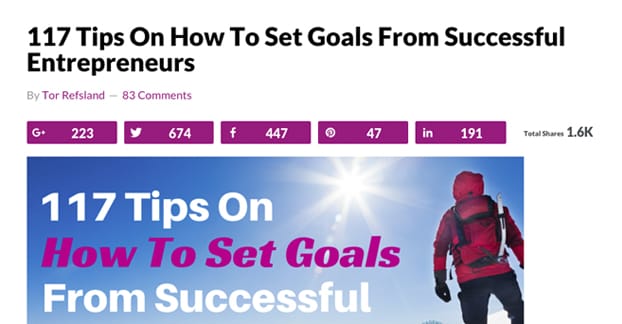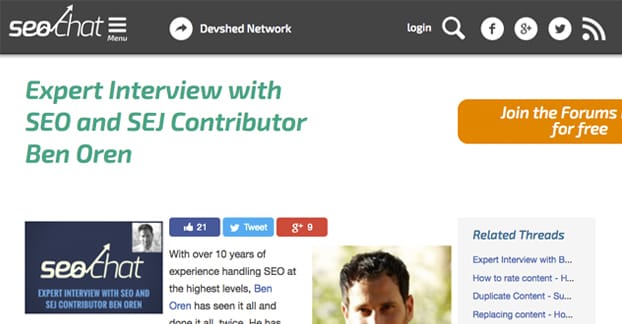At first glance, you might think this is a pretty standard article, and you might gloss over it for that reason. Just ten techniques for guest posting, that’s fine, nothing really original but whatever… wait.
What the Heck is Reverse Guest Posting?
Reverse guest posting is a term coined a few years back in a WordTracker blog post, here, by Peter Attia. At least, that’s the earliest reference to it I’ve been able to locate.
It’s a lot like regular guest posting, in that one author writes content that goes on the site of another author, for mutual traffic sharing and link benefits. The difference is in the details.
Essentially, reverse guest posting turns guest posting on its head by making your site the target of the guest post. You’re the one publishing the content. Another author – typically a high profile content producer in your industry – produces the content to go on your site.
“Isn’t every guest post I publish then technically a reverse guest post?” Yes, and no.
There are three key elements of a reverse guest post that makes it different from – and more important than – a normal guest post you get on your site.
- The content comes from a well-known and high profile author. In SEO, this might be someone like Rand Fishkin, Neil Patel, or Kristi Hines. People who have a lot of name recognition and a lot of audience.
- Instead of passively waiting for the author in question to offer to post on your site, you reach out and ask them if they’d be interested. After all, when is Neil Patel going to hit up my site and ask to guest post? He has hundreds of requests at any given time, I’m sure.
- You may incentivize the post. Unlike paying to get your post published – which generally needs to be disclosed – paying for content for your own site is more generally accepted.
And yes, it works. Interested? Read on.
How Reverse Guest Posting Works
The general idea of reverse guest posting is a pretty simple process.
Step one is to find authors in your niche who are worthwhile. You might want to look for articles people have written about the top influencers in your niche, with a Google search involving keywords a “bloggers to follow” or another phrase. You might look for interviews, to see who is being interviewed. You might look at who is writing – and guest posting – on the industry-standard top-level sites.
Step two is to determine what kind of guest post you want to have produced for your site. This is where my ten methods below come into play, so read those when you’re ready to move on.
Step three is to approach the author with a pitch. Find their contact information – either a social media account or their email, generally – and send them a pitch. Ask them if they’d be interested in writing for your site, let them know the kinds of topics you’d be interested in, and offer your incentive, if you have one.
What kind of incentives might you offer? Generally, the easiest option is just money. However, if you noticed that the author in question uses your product, you might offer them free service, or a discount they can promote to their users, or free product keys they can hand out. You can offer trial services if they aren’t customers.
Just imagine if the roles were reversed. If the author came to you and said they’d be interested in writing for your site if you could provide something of value in return; what would you offer?
Bear in mind that some writers won’t want to compromise their integrity to be paid for a post, but might still write for you anyway. Some will accept products but not money, and some will only be interested in money. Some probably won’t even be interested, or will have prices that are too high for your budget, so be prepared for that as well.
Step four is to publish the post when it’s produced. You absolutely can’t reject a post you solicit this way, though you’ll rarely feel the need to do so. It’s tricky; if you ask someone to write for you and offer them $100, and they produce content that’s pretty clearly ghostwritten by a $5 freelancer, you might call them out on it. You just need to be careful, as it can have negative effects on your ongoing relationship.
Step five is for both parties to share and promote the post. The power of a reverse guest post is to get the influencer who is contributing to your site to promote the post to their audience, which brings them to your site and helps boost your ratings.
So, what was that about individual strategies I mentioned? Here are my ten types of reverse guest posting options.
1. The Traditional Pay for Post
This is the simplest version of the reverse guest blogging content. Essentially, you just offer the influencer some money to write something for your site. There’s not much difference between this and hiring a ghostwriter, except that with a ghostwriter you claim the content is your own; with the influencer, you publish it under your name.
There may be an ethical concern over whether or not the post should disclose that it was paid for. I believe that if you are paying for content to go on your own site, there’s no reason to disclose that. It’s only if you’re paying for a position on someone else’s site – i.e. you’re getting paid to publish – that you need the disclosure. I don’t disclose that I pay my employees and contractors, since that’s just assumed. It doesn’t affect the reader’s views or the value of the piece.
2. The Single Large Interview
This kind of reverse guest post isn’t necessarily compensated by money; it’s more based on the prestige and the sharing of knowledge.
You flatter someone by asking them to interview, possibly with pay for their time, and then you come up with a series of interview questions. You get unique insight and can turn it into a great blog post, or if you perform the interview over Skype, Hangouts, or Discord – or the phone I suppose – you can convert the audio into a podcast. You can even turn this into an ongoing series by coming up with a fixed list of questions you can ask each expert who comes on the show.
3. The Multiple-Influencer Interview
This one is a lot more common and a lot easier to produce. Instead of trying to arrange a single long interview, you build a list of influencers and send one or two questions to each of them. You build a single article based on the topic, with input from all of the influencers on the topic. Here’s an example.
There are two primary benefits to this kind of interview setup. First, you get dozens of influencers to promote one post; this can be huge for links and traffic! Second, it’s a lot easier to get influencers to respond to one question they can answer in a couple minutes via an email than it is to set up them writing a long post or performing an interview that could take an hour or more.
4. The Incentivized Testimonial
This one is like a cross between a paid blog post and a product review. Pick influencers you think might be interested in your product or who would find a role for it in their business flow, and offer them a free month of service or a free copy of the product. The only catch is that they have to write you a review.
This doesn’t always work; some bloggers prefer to keep the review on their own site, for example. Even if it does, you probably have to disclose that you gave them the product to review, like how you must disclose getting a review copy for Amazon or reviewing a developer copy of a game on Steam.
5. The Coauthored Authority Piece
This one works best if you’re on the same tier of popularity and notoriety as the blogger you’re targeting. You want to find someone of a similar level of respect and authority, and both contribute your names to a massive authority piece. Something like Neil and Sujan Patel’s Advanced Guide to SEO. These kinds of content can become excellent evergreen resources, and everyone who contributes can benefit. The kicker is simply that most high tier influencers won’t want to collaborate in partnership with someone they’ve never heard of before.
6. The Post for Post Swap
This one is more like a guest post exchange than it is a reverse guest blogging strategy on its own. You pay someone to guest post on your site, and then you ask them if you can write one for their site in return. Sometimes the post in return is enough payment, sometimes you will be denied, and sometimes they might want something more out of you. It all depends on the relative quality level of the sites on both sides of the equation, and the size of the egos involved.
7. The Solicitation of Expansion
This one is an interesting twist; rather than pay for someone to write for your site, you write something on a subject they’re interested in, but make it incomplete and offer them a chance to bring their authority to bear by “completing the thought” so to speak. It’s a very hit-or-miss strategy, since not all influencers will want to take the bait, and many will be more likely to point you to resources they’ve written elsewhere rather than write something new just for you.
8. The Feature Week Event
In this one, you make something like a weekly talk show, but in text format.
For example, maybe you come up with a framework with half a dozen or so interview questions that are general enough to ask anyone, and space for another half dozen that are tailored to the specific influencer you’re interviewing. You publish this same format with a different influencer, CEO, marketer, blogger, or expert every week. Eventually, your series can gain traction as a source of great value, and people can start to get creative with their answers.
9. The Case Study Bonanza
This one is very similar to the micro-interview strategy discussed in technique number three on this list. However, instead of asking them a simple question, you go a little more in-depth and ask them for data on a specific item or element of marketing you’re studying. Ideally, you make it something they will be willing to reveal, rather than something that might involve confidential business data. Get similar data from as many different companies as you can, then aggregate it, study it, and publish conclusions. Then tell each company involved when the final consensus is published and get them to promote it – and you – for you.
10. The Front-Loaded Case Study
This one is similar to a review or paid testimonial, except the “payment” is simply an honest case study about how they used the product, how it performed, and what they were able to accomplish with it. Ideally, it works out to be a testimonial in honest form, though you do have the potential to find your influencers don’t like your product or don’t want to harvest that much data. It all depends on the kind of product, really.
Admittedly, a few of these techniques are semi-duplicates, but it’s all based on getting influencers to write something for you that you can publish on your site. You just have to decide; are you paying money for their time, or are you offering something else of value in return?
 ContentPowered.com
ContentPowered.com









